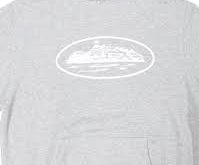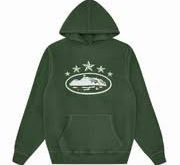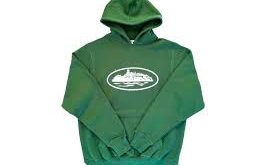When we think about safety in high places like roofs, building sites, or factories, we often expect hard helmets, harnesses, and protective gear. Guard rail system continue to be one of the most important aspects of fall safety, and they may appear basic. Yet, they play a significant role in protecting workers from scary falls. Guardrails are an example of a passive fall protection system, which means they operate without the worker’s active engagement. Unlike harnesses or lifelines, guard rails protect without needing workers to strap on.
What if guardrails could do more than serve as barriers? Today, creative designs and materials enable guardrails to go beyond basic safety. It will boost their role in saving lives and enhancing working conditions. Let’s look at how guardrails are redefining safety standards.
The Purpose of Guardrails
Guard rail systems are obstacles installed around areas where there is a risk of falling. This includes the edges of rooftops, lofty walkways, or any high platform. They protect workers and make the workplace safer by lowering random slips and falls. Guardrails are a vital component of passive fall protection systems since they do not require any specific equipment to function. Workers do not need to remember to clip themselves in or activate anything. The guardrails are always there, ready to protect.
Moving Beyond Basic Safety
Traditional Guard Rail System effectively prevents falls, but as the place change, so do safety conditions. Modern guardrails are designed to avoid falls and increase visibility. It also increases stability and even the appearance of workstations. Here’s how the new guardrails are improving safety standards:
1. Increased Visibility for Safety
New guard rail system designs prioritize visibility so that everyone can see where safety barriers begin. Guardrails are easily visible in bright colors such as yellow, orange, or red, even from a distance or in bad lighting. This visual attentiveness enables workers to be careful and alert. It lowers slips and mishaps.
2. Flexible Designs for Variable Environments
Many modern firms have unique areas, making typical guardrails impractical. New guard rail systems may be changed and adapted to fit any location. This adaptability implies that guardrails may be erected on sloped roofs, curved pathways, or surfaces without jeopardizing safety.
3. Durable Materials for Tough Conditions
Some workplaces experience harsh weather, extreme heat, or heavy use. It can degrade standard guardrails. Today’s guardrails are often composed of galvanized steel or corrosion-resistant aluminum. These materials stay longer, even in harsh settings. US Fall Protection ensures that the guard rail system remains safe over time.
Increasing Workers’ Confidence and Comfort
Safety barriers exist to protect, but they also make workers feel safe while performing their duties. Workers who see strong, dependable guardrails in situ can concentrate on their work without fear of falling. A sense of security may make a significant impact, particularly on high-rise structures, industrial operations, or windswept roofs. Guardrails are sometimes made to have a less industrial appearance. They blend in with the surroundings, making them suitable for settings such as rooftop gardens or attractive buildings where the look is essential. By integrating safety and aesthetics, these contemporary guardrails make it easy to design useful and visually appealing workstations.
Guardrails as Part of a Larger Safety Culture
One of the nicest aspects of guardrails is that they complement a company’s safety culture. Passive fall protection solutions, such as guard rail system, display a dedication to safety from the start. Workers do not need to take extra precautions to keep safe. The environment is designed to protect them while not interfering with their operation. This proactive approach to safety helps firms avoid costly accidents and downtime. It benefits both employees and employers. Further, companies that invest in high-quality guardrails demonstrate to their employees that they prioritize safety. This, in turn, fosters trust and loyalty among employees, resulting in a more motivated and dedicated team.
Innovative Features Enhancing Guardrail Standards
New designs and technology have enabled guardrails to incorporate sophisticated features that make them even more effective at safeguarding workers. Some examples of these innovations are:
1. Self-closing Gates
Specific guard rail system has now included self-closing gates to improve entry and exit safety. These gates automatically swing shut behind the worker, lowering the possibility of someone mistakenly leaving a hole in the barrier.
2. Guardrails with Built-In Warning Signs
Guardrails are increasingly being developed with built-in signs to inform workers of potential risks. These warning signs remind us of certain safety standards or indicate any temporary changes in the surroundings. Having these signs in place eliminates the need for workers to hunt for information; it is already present, keeping safety at the forefront.
3. Modular Guardrails with Easy Installation and Adjustment
Some guardrails now come in modular components, making them simple to install, alter, and remove as required. This adaptability benefits building sites or places that change regularly since the guardrails may be readily relocated to meet new needs.
A Simple Solution with Long-Term Impact
Guardrails are highly successful because of their simplicity. Guard rail system don’t require any precise knowledge to operate. They don’t need to be adjusted on a regular basis, and everyone on site should be protected equally. Companies create safer settings for everyone by installing sturdy, adaptive, and clearly visible guardrails. And, as guardrails get more complex, they provide protection that is not just dependable but also intelligent and intuitive.
Why Passive Fall Protection Systems Matter
Active fall protection systems, such as harnesses, are useful in high-risk areas, while passive fall protection systems, such as guardrails, are actually essential for safety. They guarantee that no worker is left unprotected and that protection is available around the clock. Guardrails are an excellent example of a passive fall prevention device since they do not require human interaction to function. They merely provide a barrier, preventing accidents before they occur.
 Daily Blogger News Stay updated with the latest trends and insights. Your reliable source for daily updates and information.
Daily Blogger News Stay updated with the latest trends and insights. Your reliable source for daily updates and information.







